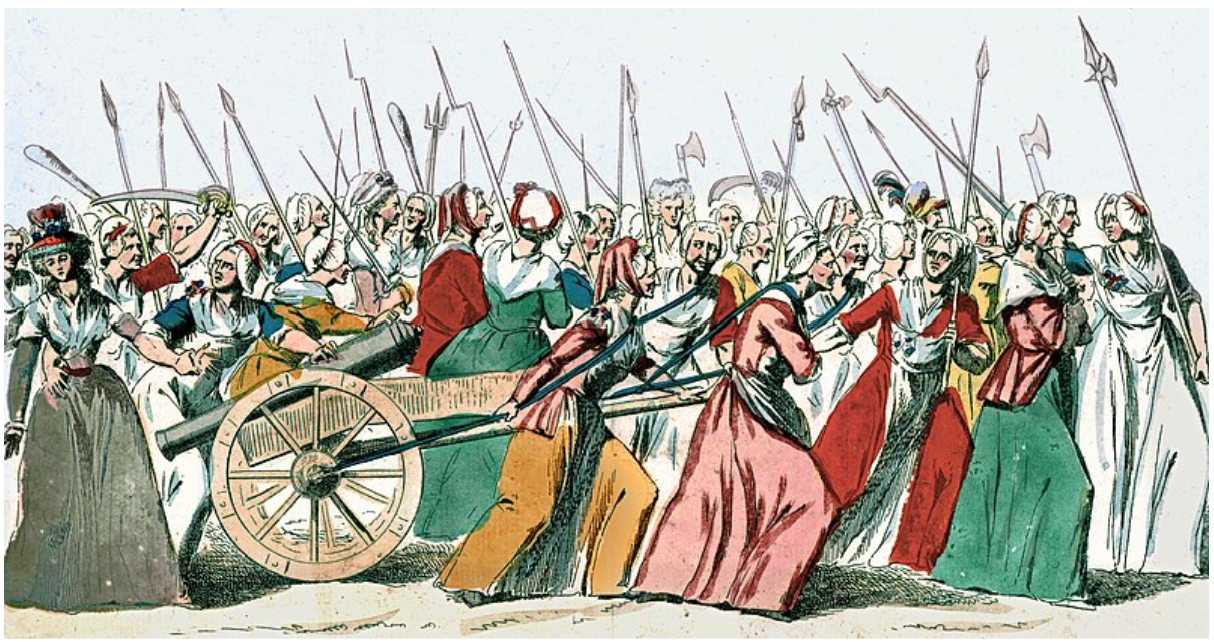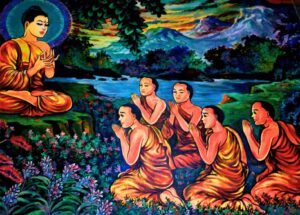Introduction
In European history, the French Revolution was a revolutionary movement that brought about profound societal and political changes. The role that women played in the revolution was amazing. Women’s participation was only allowed in the domestic sphere before the Revolution or during its early years. They all desired, though, to air their concerns and political beliefs and take part in public life like men. In addition to their responsibilities to their families, women were drawn to the idea of equality and fraternity. Through various forms of action, women gradually began to unite and demand equal rights. They wanted to be in control of their destiny and would not accept being treated as passive second-class citizens.
Traditional Duties of Women
- Before the French Revolution began in the eighteenth century, women were viewed as second-class citizens. They were not given any political rights or a recognized role in society.
- Men made all the significant decisions on their behalf. Before they got married, their fathers made decisions for them. After being married, their husbands made all of their decisions.
- Even the enlightenment-era progressive writers were opposed to women’s political rights. No property rights of any kind were granted to women.
- They were still viewed as purely sexual beings, which made them very distinct from their male counterparts and perfectly suited for domestic settings.
- Although third estate women were not allowed to receive a formal education, they continued to labor in tailoring shops, laundries, or as maids in the homes of the wealthy to make a living.
- Before the revolution began, women from the upper class participated in gatherings called salons to explore novel concepts regarding education, individual rights, and other social issues.
- Like their male counterparts, French aristocrats or ministers, they had the benefit of receiving a formal education and were regarded as intellectuals. Although, they still lacked the legal authority to engage in public life.
Revolutionary Activism of Women
Many of these women from various social strata rushed to the streets to express their rage once the uprising began, capitalizing on the tumultuous political climate.
Women’s March
In 1792, many women marched in a parade carrying weapons through the Legislative Assembly’s chambers and onto the Tuileries Gardens before arriving at the Monarch’s home after learning that the King was planning a counter-revolution. The high cost of cereals and the scarcity of bread had thousands of women in an uproar. At the infamous Women’s March on Versailles, which drew more than 60,000 women, the demands of feminist revolutionaries Théroigne de Méricourt and Pauline Leon for women’s full citizenship and the economic crisis were interwoven. Nevertheless, the call for women to be granted citizenship was ignored.

Newspapers and Social Groups
Whatever the circumstances, women could not be barred from participating in public life during a revolution. The French Revolution also had a large element of individual women’s revolutionary participation. A periodical published by Nicolas de Condorcet supported the call for women’s political rights. A group called Cercle Social was eventually founded by this publication to promote equal rights for women in marriage and education. It was led by a Dutchwoman named Etta Palm d’Aelders.
Activism through Writing
Through their writings, women writers also expressed their discontent. To prove that the government had been depriving women of rights since the dawn of time, Olympe de Gouges issued a document in 1791 called “Declaration of the Rights of Woman” that used language and a structure similar to the “Declaration of the Rights of Man and Citizen.” She paid a terrible price for her advocacy by being put to death by the guillotine.
Political Organization of Women
Women’s revolutionary activism extended beyond simple street protests and demonstration planning. To show their unwavering support for the Republic, Leon, and her ally Claire Lacombe founded the Society of Revolutionary Republican Women in 1793. They did this by donning tricolored symbols, protesting the high price of bread, stockpiling grains, and eventually bringing down the price increase. When their demands were not met, they quickly turned to riot, looting stores, grabbing food that had been hoarded, and kidnapping police officers.
Banning and Execution of Women Activists
The men in the revolution, meanwhile, were against women’s equal rights. The Revolutionary Republican Women were being demonized as dangerous agitators while they were ruling the Jacobins. The ladies were sent home to look for their children and homes. Men reminded them that women were made by nature to bear and raise children. They cannot acquire citizenship rights. Their proper setting is the home, while men belong in the public sphere. Political power can only be used by men. Most of the female activists who were punished suffered detention, arrest, execution, or exile.
Summary
Women played a spectacular and important role in the French Revolution. Participating in the revolution were women from every social group and class. By taking part in the protest, speaking out about economic difficulties, founding political clubs to demand their rights, publishing newspapers, and creating plays, women exposed how they were being denied their rights. Women actively participated in the revolution despite knowing the outcome of their activity. Women gained the rights to education, marriage consent, and divorce with the establishment of the Revolutionary government.
Frequently Asked Questions
1. Who were the Jacobins?
Ans. Members of the political group known as the Jacobin Club were known as Jacobins. It was a well-known club during the French Revolution and a revolutionary political organization. They adhered to the constitution, which protected natural rights and upheld human rights.
2. Who killed the Jacobin leader Jean-Paul Marat? Why?
Ans. On July 13, 1793, Charlotte Corday assassinated Jean-Paul Marat, the leader of the Jacobins. The publication “The Friend of the People,” published by the Jacobin leader Jean-Paul Marat, severely criticized those who questioned the Revolution’s shift toward violence, threats, and other forms of aggressiveness.
3. Who was Marie Antoinette? What was her role in Monarchical rule in France?
Ans. After marrying King Louis XVI of France, Marie Antoinette assumed the role of queen of France. Because of her opposition to progressive reform ideas, Marie Antoinette became notorious among the French populace. Her popularity is thought to have contributed significantly to the French monarchy’s downfall.
